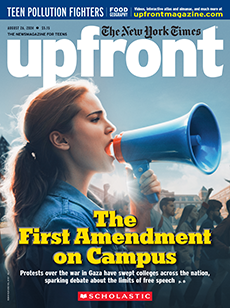1. Set Focus
Pose this essential question to guide discussion: Why are platforms like TikTok and YouTube so popular?
2. List Vocabulary
Share with students some of the challenging vocabulary words in this article. Encourage them to use context to infer meanings as they read.
- embedded (p. 10)
- threshold (p. 10)
- diversify (p. 10)
- monetization (p. 10)
- engaged (p. 11)
- proportion (p. 11)
3. Engage
Do you have a favorite YouTube or TikTok influencer? What types of content do they make? How do you think they became successful? Revisit this discussion after the lesson, having students share any new insights they’ve gained.
